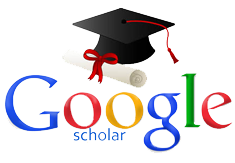Pengaruh Pemanfaatan Lingkungan Alam Sekitar Sekolah Sebagai Sumber Belajar Terhadap Hasil Belajar Siswa Kelas X SMA Negeri Welamosa
DOI:
https://doi.org/10.31004/jpdk.v5i4.17598Abstract
Penelitian ini bertujuan untuk mengetahui pengaruh pemanfaatan lingkungan alam sekitar sekolah sebagai sumber belajar terhadap hasil belajar siswa kelas X SMA Negeri Welamosa. Jenis penelitian yang digunakan adalah penelitian kuantitatif dengan pendekatan eksperimen dan desain yang digunakan one group pretest-posttest design. Populasi dalam penelitian ini adalah siswa kelas X SMA Negeri Welamosa yang berjumlah 30 orang siswa dan terdiri dari satu kelas. Sampel dalam penelitian ini adalah siswa X SMA Negeri Welamosa yang terdiri dari 30 orang siswa. Pengambilan sampel dalam penelitian ini dengan menggunakan teknik purposive sampling, dan data akan dianalisis dengan menggunakan SPSS versi 25. Hasil penelitian menunjukan bahwa pemanfaatan lingkungan alam sekitar sekolah sebagai sumber belajar berpengaruh terhadap hasil belajar siswa pada materi ekosistem kelas X SMA Negeri Welamosa tahun pelajaran 2022/2023. Hal tersebut dapat dilihat dari nilai rata-rata pretest 40,67 sedangkan nilai rata-rata posttest 79,00 dan nilai signifikan pada hasil uji hipotesis paired sample test dengan nilai sig. (2-tailed) 0,000 < 0,05.Downloads
Published
2023-08-11
How to Cite
Kemba, . M. D. ., Jariyah, A., & Wae, V. P. S. M. . (2023). Pengaruh Pemanfaatan Lingkungan Alam Sekitar Sekolah Sebagai Sumber Belajar Terhadap Hasil Belajar Siswa Kelas X SMA Negeri Welamosa. Jurnal Pendidikan Dan Konseling (JPDK), 5(4), 363–369. https://doi.org/10.31004/jpdk.v5i4.17598
Issue
Section
Articles
License
Copyright (c) 2023 Maria Diana Kemba, Ainun Jariyah, Veronika P. S. Mbia Wae

This work is licensed under a Creative Commons Attribution-ShareAlike 4.0 International License.
Authors retain copyright and grant the journal right of first publication with the work simultaneously licensed under a Creative Commons Attribution-ShareAlike 4.0 International License that allows others to share the work with an acknowledgement of the works authorship and initial publication in this journal. Authors are able to enter into separate, additional contractual arrangements for the non-exclusive distribution of the journals published version of the work (e.g., post it to an institutional repository or publish it in a book), with an acknowledgement of its initial publication in this journal. Authors are permitted and encouraged to post their work online (e.g., in institutional repositories or on their website) prior to and during the submission process, as it can lead to productive exchanges, as well as earlier and greater citation of published work (See The Effect of Open Access).





.png)










